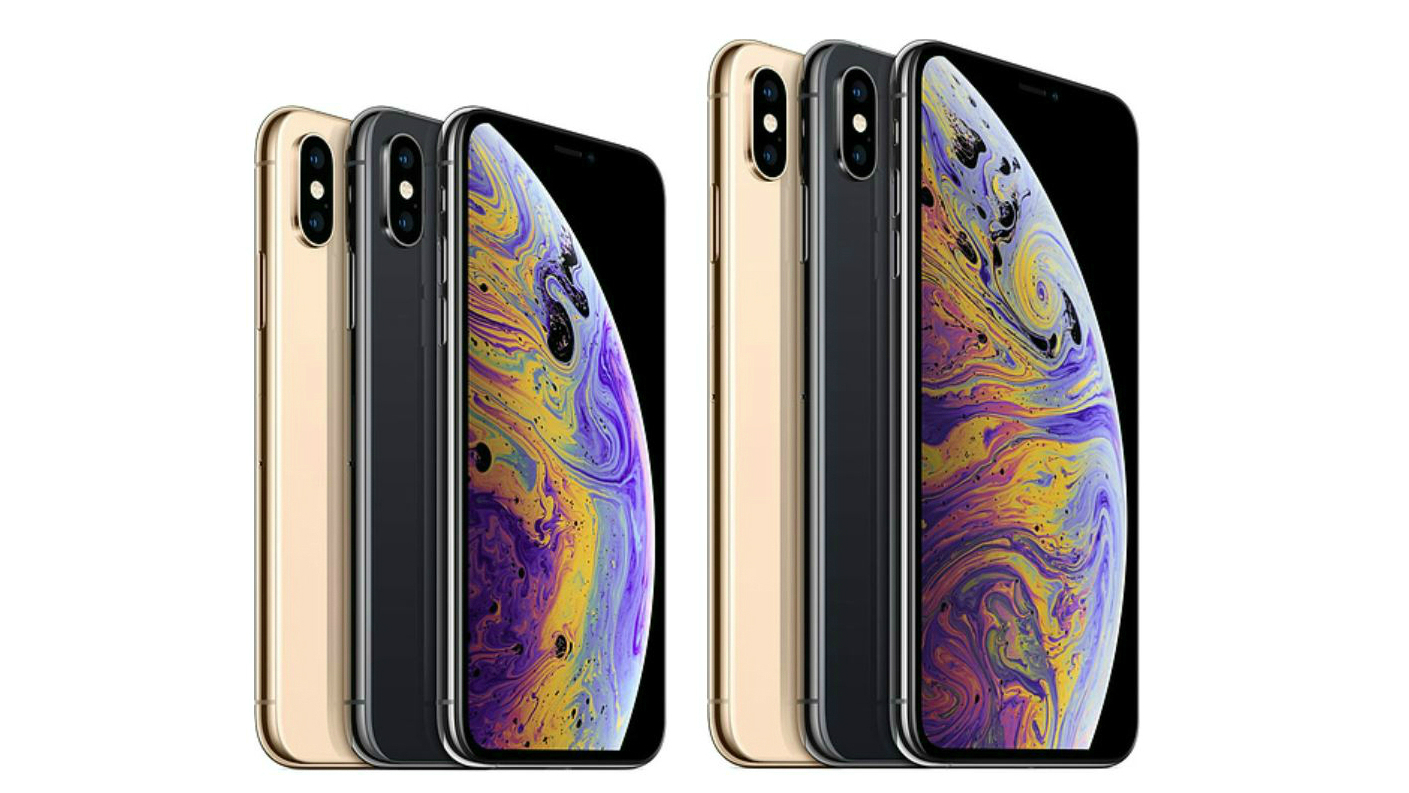10 things you need to know about the new iPhones
The key points on the iPhone XS, iPhone XS Max and iPhone XR

Apple has unveiled the iPhone XS, iPhone XS Max and iPhone XR, its new generation of edge-to-edge iPhones.
The iPhone XS and the iPhone XS Max share a striking similarity to last year's iPhone X, while the iPhone XR is a new offering aimed at customers in search of a less premium, and (slightly) more affordable iPhone option.
While the world witnessed Apple's launch on their screens, the TechRadar team were quick to get their hands on all three devices at the event.
There's a lot to talk about, and you can find all the details in our extensive iPhone coverage, but if you've only got time for the key points, you've come to the right place.
We've put together a list of the 10 biggest things you need to know about the new iPhones right now.
- Hands on: iPhone XS review
- Hands on: iPhone XS Max review
- Hands on: iPhone XR review
1. Apple's Super Retina OLED display
Both the high-end iPhone models get an upgraded display panel which Apple is calling "Super Retina".
The smaller iPhone XS has a 5.8-inch OLED panel with with a 2436 x 1125 resolution and 458ppi pixel density, while the Max variant has a 6.5-inch OLED screen with a 2688 x 1242 resolution and pixel density of 458 ppi.
Sign up for breaking news, reviews, opinion, top tech deals, and more.
Apple also touts the front and back glass to be the most durable glass ever in a smartphone.
Moreover, the new iPhone XS and iPhone XS Max will support Dolby Vision alongside traditional HDR10 – two types of HDR formats that will make binge-watching your favourite shows even better.
Let's not forget the iPhone XR, which Apple claims has the "best LCD on a phone." It get's a "Liquid Retina" 6.1-inch display with 1792 x 828 resolution and 326ppi pixel density.
2. Fingerprint sensors and headphone jacks are dead
This year's launch points towards a complete takeover from Touch ID to Face ID on iPhones.
All three handsets have ditched the home button, and embedded fingerprint scanner, in favor of more screen and Face ID smarts in the notch at the top of the display
Apple got rid of the headphone jack with the iPhone 7 back in 2016, but the 2018 iPhone launch also marked another key moment - end of the iPhone 6S and iPhone SE on Apple's websites - the last remaining handsets to offer the popular port.
3. Apple gives us dual-SIM support for the first time
For the very first time, Apple has incorporated the most-asked feature in the iPhones. The iPhone XS and XS Max get dual-SIM support, allowing users to have nano-SIM and a digital eSIM which comes pre-embedded in the handsets.
Although the dual SIM support will be available to users via an OTA update in the coming months, you will need two seperate wireless service plans to take advantage of the feature.
While some of the carriers in countries like the US and UK have support for eSIM ready, countries like India might need to wait until a major telco rolls out the service in partnership with Apple.
4. New iPhone color variants
Apple has introduced plenty of variety for those who are choosy with the colors. The expensive XS and XS Max come in a surgical grade stainless steel with glass on both sides. You can pick from in silver, space grey, and a new polished gold color.
On the other hand, Apple makes things funkier with a myriad of colors on the iPhone XR with white, black, blue, coral, yellow and red. You name it, you get it.
5. The A12 Bionic chip is a world first
The A11 Bionic chipset in the iPhone X performed impressively against the competition, and the A12 Bionic is even more powerful.
It consumes less power by running 40-50% more efficiently, performance is 15% faster and app launch speed gets a 30% boost.
The Neural Engine is once again the highlight that offers real-time machine learning for the camera app and for augmented reality apps. Apple also emphasises on the Core ML framework that enables developers to use machine learning with 1/10th of the energy consumption and 9x the speed.
6. Even better water resistance
The iPhone 7 was Apple’s first phone that came along IP67 certification for water and dust resistance, which was constant on the iPhone X and 8 as well.
This time though, Apple has upgraded the certification to IP68, which makes the new iPhones even more resistible to dust and liquid conditions.
They can reach a new level of up to 2 meters under water for 30 minutes, and are also protected against everyday spills including coffee, juice and soda.
7. iOS 12 is here from the start
All three new iPhones arrive with Apple's latest operating system, iOS 12, on board.
New features like Memoji, Group Notifications, and, importantly, better overall performance is what users can expect from the OS.
New Screen Time feature helps users to track and take control of the time they spend interacting their iPhones, Siri shortcuts allow more apps to work with Siri and new privacy features help protect you from being tracked on the web.
There’s a lot more to discover in the latest update. You can learn the A to Z of the new OS in our dedicated hub for iOS 12.
8. The best smartphone cameras around?
The rear cameras in the iPhone XS and the iPhone XS Max have the same resolution as the iPhone X’s dual lens camera, but that’s all they have in common here.
Apple claims its new cameras are unlike any smartphone snapper you’ve seen before. The new 12MP wide-angle and telephoto sensors come together with a new image signal processor in the A12 Bionic and the upgraded neural engine.
One of the feature is called Smart HDR that enhances typical HDR features by shooting a 4-frame buffer in between every picture with secondary inter-frames at different exposures. These frames are then used to automatically combine to bring out better colours, shadows and highlights.
The iPhone XR gets a single 12MP sensor that’s used as the primary sensor in XS models. Nonetheless, it can still do Bokeh with just one sensor and it retains that adjustable depth feature from the XS that allows users to change the blur impact on images in the editor.
9. Better battery enhancements
One of the most subtle yet significant enhancements includes bump in battery performance.
Apple claims that the iPhone XS will offer 30 minutes of additional battery life per charge compared to the iPhone X, whereas the bigger iPhone X Max gets an 90 minutes. The iPhone XR also gets 90 minutes longer battery life compared to the iPhone 8 Plus.
10. Price and release date
The iPhone XS and iPhone XS Max go on sale September 21. Pre-orders start a week earlier on September 14 for countries in the first rollout wave, including the US, UK, and UAE.
In terms of the iPhone XR release date, you’ll be able to pre-order it from September 14, and pick it up in stores from September 21
iPhone XS (64GB, 256GB, 512GB)
US - $999, $1,149, $1,349
UK - £999, £1,149, £1,349
AU - $1,629, $1,879, $2,199
India- Rs 99,900, Rs 1,14,900, Rs 1,24,900
iPhone XS Max (64GB, 256GB, 512GB)
US - $1,099, $1,249, $1,449
UK - £1,099, £1,249, £1,449
AU - $1,799, $2,049, $2,369
India - Rs 1,09,900, Rs 1,24,900, Rs 1,44,900
iPhone XR (64GB, 128GB, 256GB)
US - $749, $799, $899
UK - £749, $799, $899
AU - $1,229, $1,299, $1,479
India - Rs 76,900, Rs 81,900, Rs 91,900
- Hands on: iPhone XS review
- iPhone XS vs iPhone XR

Sudhanshu Singh have been working in tech journalism as a reporter, writer, editor, and reviewer for over 5 years. He has reviewed hundreds of products ranging across categories and have also written opinions, guides, feature articles, news, and analysis. Ditching the norm of armchair journalism in tech media, Sudhanshu dug deep into how emerging products and services affect actual users, and what marks they leave on our cultural landscape.
His areas of expertise along with writing and editing include content strategy, daily operations, product and team management.